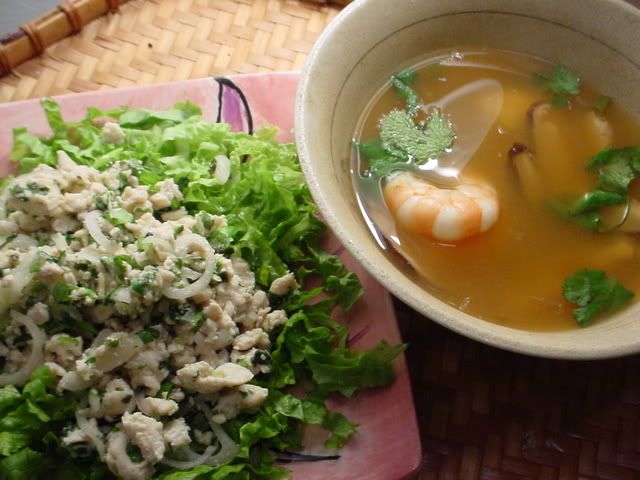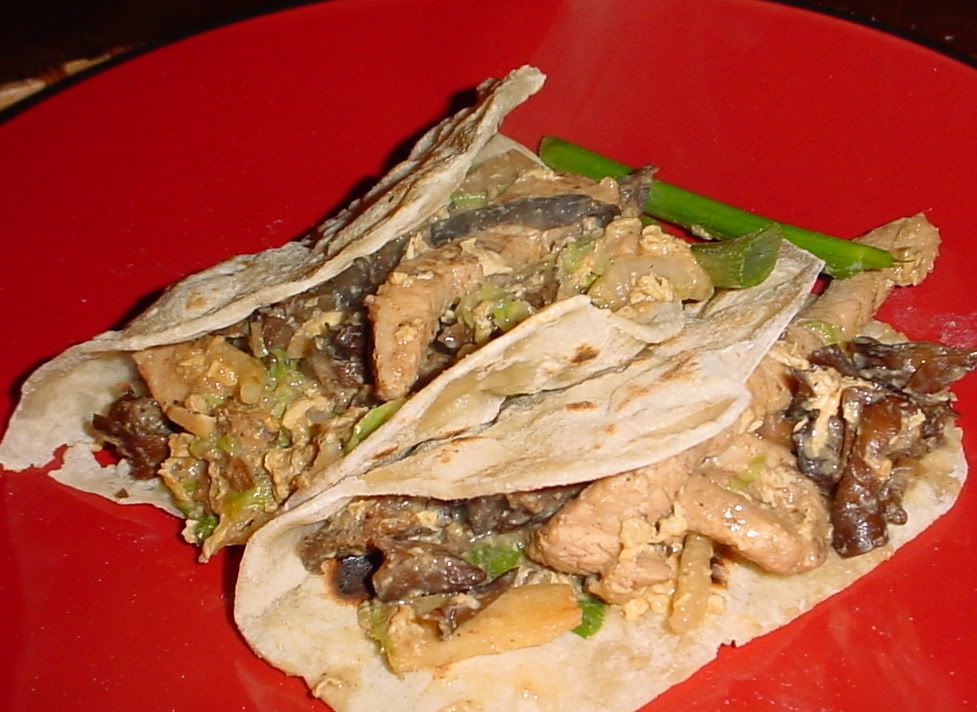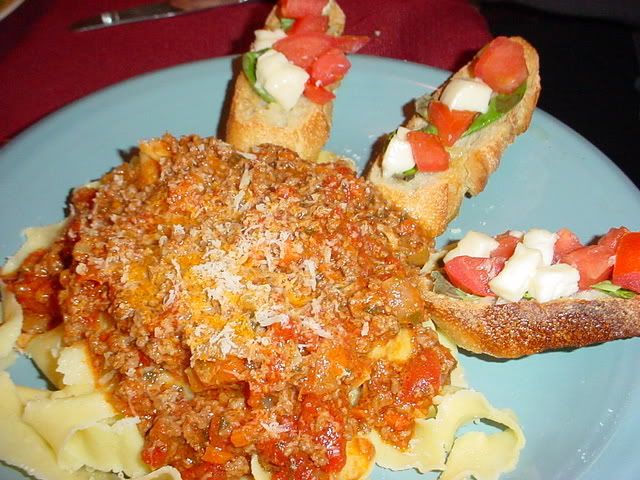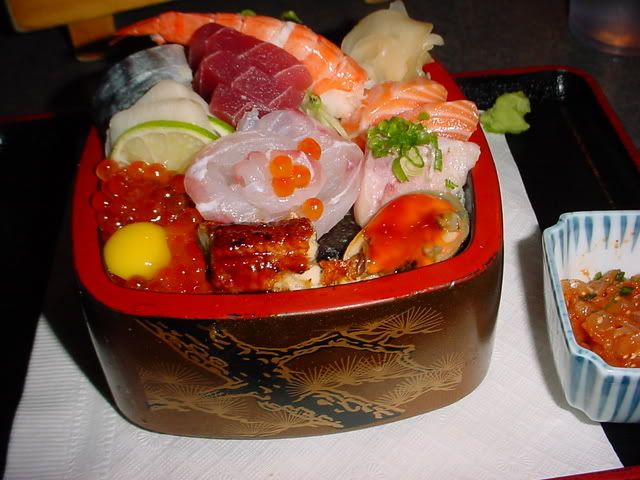
- Beef Tataki
- Beef Negimaki
- Chicken Yakitori
- Bacon-Wrapped Shitaki & Enoki Mushrooms
- Pork Tonkatsu
You'll also notice that the platter was served with edamame (steamed soy beans, which go great with beer) and a couple of saketinis: these ones with vodka, sake, and fresh squeezed OJ.
Japanese cuisine is, obviously, best known for its preoccupation with seafood. And for good reason: there are few things more sublime than a great piece of toro, a dollop of fresh uni, or a quail egg resting on a glistening bed of salmon roe. Yet the popularity of sushi often obscures (for Americans at least, the rising popularity of tempura and of ramen restaurants nothwithstanding) the many delicious Japanese dishes made of beef, chicken, and pork.
All of these dishes share an underlying simplicity of preparation and presentation, and all can be made with a small number of core ingredients that can be found at most Asian markets and even many supermarkets these days: sake, rice vinegar, shoyu (japanese soy sauce, typically lower in sodium content than Chinese soy sauce), mirin (a sweetened rice wine used for cooking), castor sugar (confectioner's sugar will also work), panko crumbs, and garlic. Apart from these, it's all about finding top notch cuts of meat--and we're fortunate enough to have a Whole Foods in Sarasota, so while this meal wasn't done on the cheap (the organic filet mignon was $26 a pound) it was well worth the time and effort.
What do you say we get a little more acquainted with the various menu items?
Beef Tataki and Beef Negimaki

"Tataki" is a cooking method that means 'to sear on the outside while leaving the inside raw'--just like "tartar," though I don't believe they are etymologically related. Tuna tataki is another favorite, but prepared slightly differently. I marinated a chunk of filet mignon in a soy/mirin/rice vinegar/sake mixture for several hours, then seared each side of the cut, immediately plunging it into a bowl of ice water to stop it from cooking further. I then simmered the marinade while adding a bit of sugar, chilled it quickly in the freezer, and marinated the filet for another hour or so before slicing thin and serving with the marinade as a dipping sauce.
The beef negimaki (what some Americans have called "beef sushi rolls") is one of my favorites. It was prepared by mallet pounding a 1/2 inch thick slice of london broil (try to get a lean cut) until it was about 1/4 inch thick. I then cut the long slab into four pieces, rolled each around a bunch of fresh scallions, secured with short skewers, marinated, sauteed in vegetable and sesame oil until nice and seared on all sides, removed skewers, and sliced into little rolls. You can dip this in the tataki marinade if you like.
Bacon-Wrapped Shitake & Enoki Mushrooms

I featured this months ago on Kitchen Monkey, but this time it came out much better, partly because I added shitake to the enoki, and partly because I used center cut bacon, which has less fat and more meat on it. You can omit the enoki altogether if you can't find any, just slicethe shitake thin, group it together, wrap a strip of bacon around it, secure with toothpick, and grill or broil on both sides. Delicious.
Chicken Yakitori

These are done well on the grill, but you can use a broiler so long as you have a wire rack. Pieces of chicken breast or thigh are alternately broiled and dipped in a syrupy marinade similar to teriyaki sauce. After repeating the process a couple times, place on skewers with pieces of scallion, baste once more, and return to the broiler or grill until the chicken starts to darken on the edges.
Pork Tonkatsu

This is one of my favorite Japanese dishes. I started by cutting some deep slices into a beautiful pork loin chop (to keep it from curling), dredging it in a mixture of flour and white pepper, then whisked egg, then coating it in a thick layer of panko crumbs (Japanese bread crumbs that work amazingly well for a wide variety of foods.) Deep fry in vegetable oil (medium high heat) slice, and serve with cabbage (I was out of cabbage and chopped up a leftover endive), hot mustard, and tonkatsu sauce for dipping (vaguely similar to worcestshire sauce but fruitier).
Whew. That was a lot of meat for one sitting. I think it's veggie cous cous tonight.














